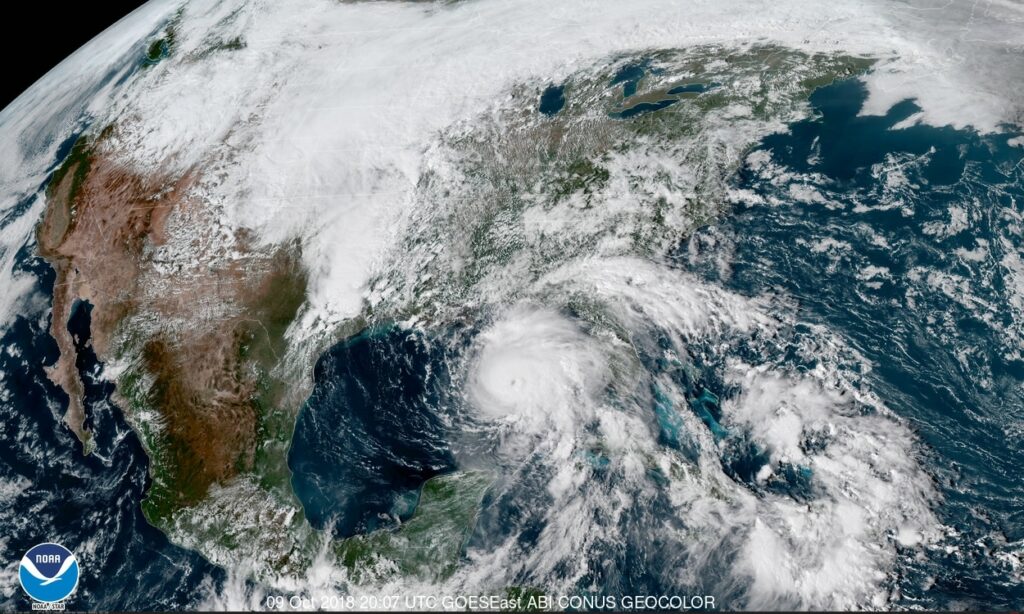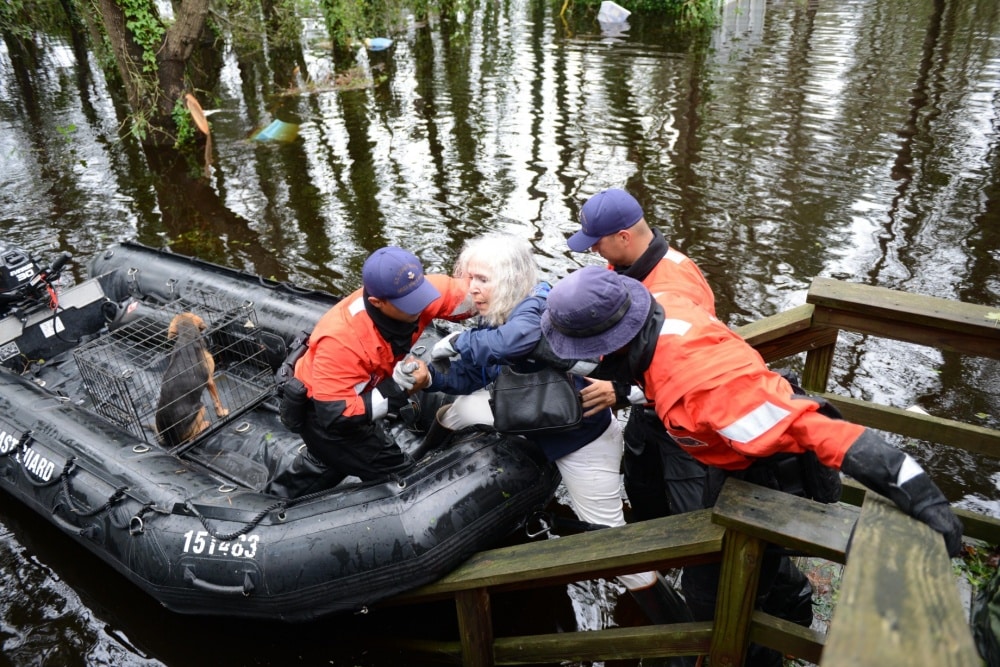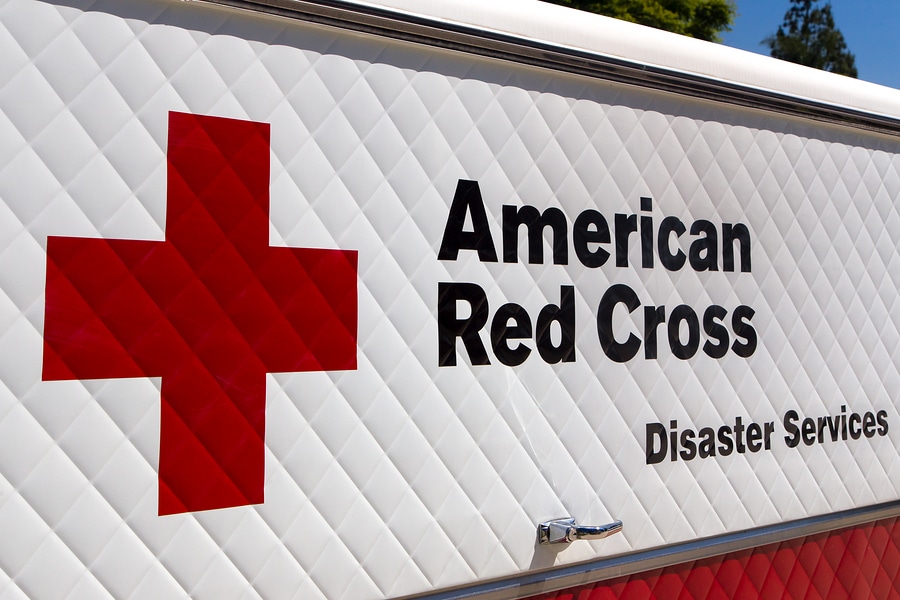Hurricane Michael: Florida Panhandle Hospitals Brace For The Storm

Update, 8:30 a.m. CST, Oct. 10, 2018 After gathering speed and intensity, Hurricane Michael is tearing towards the Florida Panhandle and increased in strength Wednesday morning. As of 8 a.m. CST, Michael was upgraded to a Category 4 hurricane with top sustained winds of 145 mph. Forecasters have said Michael could be the strongest storm to hit the Florida Panhandle in history, affecting nearly 30 million people in the Southeast. New forecasts expect Michael to make landfall Wednesday afternoon. Along with devastating wind speeds, storm surge predictions also increased to 14 feet and forecasters warn of flash flooding in Florida, southern Alabama and Georgia. Florida Gov. Rick Scott and emergency response officials have advised any residents who have not already evacuated need to hunker down, as it’s too late to leave the area. “The time for evacuating along the coast has come and gone,” Gov. Scott said in a Twitter post. “First responders will not be able to come out in the middle of the storm. If you chose to stay in an evacuation zone, you must SEEK REFUGE IMMEDIATELY.” You can find online resources for emergency preparedness and help here: Find open shelters here: https://www.floridadisaster.org/shelter-status/ Free housing for evacuees and disaster responders available through Airbnb: https://www.airbnb.com/welcome/evacuees/hurricanemichael Report significant debris from the storm: https://survey123.arcgis.com/share/466259a6f3fc41e58bb3f651e59e3bd1 App for emergency updates on the storm: http://fpbs.org/get-emergency-info-on-free-florida-storms-mobile-phone-app/ Find out current traffic conditions: https://fl511.com/App Original Story Hurricane Michael, a major hurricane with winds up to 120 mph, is expected to make landfall Wednesday afternoon near Panama City, covering most of Florida’s Panhandle region, according to current hurricane models. The National Hurricane Center expects life-threatening storm surge—up to 12 feet in some areas—along the coast of the Florida Panhandle, Big Bend and Nature Coast regions. Hurricane-force winds from Michael will extend across parts of the Panhandle, southern Georgia and southeast Alabama. Unlike Hurricane Florence in September which stalled on the Carolina coast dumping record-breaking rainfalls, Michael is expected to move quickly through the Panhandle and curve northeast, moving through Georgia by Thursday afternoon. The storm could also intensify to a Category 3 hurricane by the time it makes landfall, carrying winds of up to 130 mph. Florida Gov. Rick Scott declared a pre-landfall state of emergency for 35 Florida counties to secure federal assistance and encourage residents to evacuate before the storm hits. Scott also activated 2,500 National Guard members for storm response, he said during a press conference Tuesday. Florida health officials communicated with healthcare facilities and nursing homes Monday afternoon to prepare for the storm, Scott said. After Hurricane Irma hit last year, 14 people died in South Florida when a nursing home lost power and air conditioning. “The Florida Department of Health has five ambulance strike teams and 35 special needs shelter teams ready to deploy,” Scott said. “The expectations are: If you’re responsible for a patient, you’re responsible for the safety of that patient through this entire storm.” As of Tuesday afternoon, several healthcare facilities in the path of the storm activated emergency response procedures, canceling or rescheduling outpatient and elective procedures. Some facilities in the Tallahassee area are monitoring the storm before activating emergency response declarations. Flowers Hospital in Dothan, Alabama is closing all of outpatient departments on Wednesday, according to a WDHN report. In response to the storm, the Department of Health issued an emergency order allowing healthcare professionals with a valid, unrestricted and unencumbered license in any state, territory, or district to render services in Florida during a 30-day period, according to Gov. Scott’s website. Florida became a compact nursing license state this year but does not normally allow for quick temporary licenses. The Florida Board of Nursing office, located in Tallahassee, will be closed until Thursday, according to their voicemail message. Travelers entering the state should be aware that major highways designated as evacuation routes could be congested with evacuees and could affect their access to locations along the Panhandle. Hurricane Safety Checklist Regardless of where you are located or if you’re working at a hospital during the storm, your first priority is to have a disaster plan in place to protect yourself and your family in a time of crisis. The American Red Cross has provided a hurricane safety checklist that has everything you can do to prepare for the storm and respond to the aftermath. We’ve provided a PDF of the checklist below, but you can also download or view it here: Hurricane Checklist
Hurricane Florence Shifts Demand Inland for North Carolina Travel Nurses

Update, 9:35 a.m. CST, Sept. 21, 2018 More open positions were made available in Charlotte, North Carolina to help deal with Hurricane Florence evacuee patient loads, according to information from industry sources. At least 40 open positions are available in the area for travel nurses. Most of the requested positions are for medical-surgical and telemetry travel nurses, but there are still labor and delivery spots available. Travelers can view North Carolina opportunities on the StaffDNA job board here >> Original story, posted at 9:43 a.m. CST, Sept. 19, 2018 North Carolina is a consistently popular state for travel healthcare professionals—it regularly ranks among the top 10 most applied-to states every month and has a wide variety of job opportunities through most seasons. However, the devastation from Hurricane Florence this weekend forced several coastal hospital locations to close entirely and evacuate patients inland, meaning travel nurse job opportunities have followed suit. “With the flooding…hospitals have been closed down close to Wilmington,” said Kelsey Moena, a client advisor for staffing agency LiquidAgents Healthcare. “They are not bringing in (travel nurse) candidates because you can’t even get to the hospitals.” Thousands of patients and healthcare providers evacuated early last week to avoid the storm, while a limited number of staff and hospitals in evacuation zones were granted mandatory evacuation exemption waivers and stayed behind to keep emergency centers open. Multiple facilities in the Cape Fear Valley Health System remained closed or had delayed opening on Wednesday from flooding and power outages, according to a press release. Several outpatient facilities associated with New Hanover Regional Medical Center in Wilmington opened Wednesday, but other facilities including Pender Memorial Hospital, NHRMC Orthopedic Hospital, and NHRMC ED-North remained closed, according to the hospital’s website. Because of these closures, travel nurse needs have shifted west towards the inland hub of Charlotte. Carolinas Medical Center recently posted at least 20 needs for travel nurses to help with new patient loads from the storm, according to industry sources. The hospital is primarily looking for medical-surgical, telemetry and labor and deliver travel nurses. Find travel nurse opportunities in Charlotte, NC >> Travelers who can’t make it to North Carolina but still want to help can donate to ongoing disaster relief efforts by clicking here. Closed Cape Fear Valley Health System facilities include: Bladen Medical Associates – Bladenboro Bladen Medical Associates – Dublin Bladen Medical Associates – White Lake Bladen Medical Associates – Clarkton Cape Fear Valley Primary Care at Lumberton QuikCare at Robeson Cape Fear Valley Foot & Ankle – Lumberton and Laurinburg offices Cape Fear Valley Podiatry’s Lumberton office Bladen Physical Therapy Cape Fear Valley Rehabilitation Center’s Outpatient Pediatric Physical Therapy All other Cape Fear Valley clinics are open, but Cape Fear Valley Diagnostic Center will open at 7 a.m. and HealthPlex will open at 8 a.m.
Hurricane Florence By The Numbers

While the remains of Hurricane Florence, now a tropical depression, makes its way northeast, residents, disaster relief workers and state officials in North Carolina and South Carolina are left to deal with the impact. Several government agencies and outside interest groups have released preliminary estimates of the damage done by the storm, as well as the level of support provided to evacuees. We’ve gathered the most notable information below and plan to update the data if final tallies are confirmed. You can find online relief resources and ways to help those affected by the storm by clicking here. Estimated Damage Storm-Related Fatalities: 33 North Carolina: 26 South Carolina: 6 Virginia: 1 317,849 customers without power in North Carolina (as of Sept. 18) Closed Roads: 1,200 in North Carolina 1/4 of North Carolina’s tobacco crops damaged 63,000 gallons of untreated wastewater flowed from a sewer main in Greensboro Damage To Homes, Businesses, Infrastructure: $16-20 billion Relief Response U.S. Coast Guard Total Rescues: 426 people and 234 pets (As of Sept. 17) Number of Coast Guard responders: More than 3,000 Shallow-water Rescue boat teams: 35 deployed to North Carolina Helicopter Rescue Crews deployed: 9 North Carolina Response Swift Water Rescues: 2,600* Swift Water Rescues (Pets): 578* Number of National Guard members activated: 2,800 NC Department of Transportation employees responding: 2,100 * Numbers include best estimates of state and federally-conducted rescues as of Sept. 18. Numbers only denote people who were saved by boat or helicopter, not those escorted to safety, according to the North Carolina Department of Public Safety website. American Red Cross Total Evacuees In Shelters: 14,000* Number of Available Shelters: More than 200* Red Cross Worker Response: 1,500* Emergency Vehicles Deployed: 80* Trailers w/ Emergency Equipment & Supplies: More than 120* Meals and Snacks Served: More than 4,500* Weather Alerts Sent via Red Cross Apps: 1.8 million* * As of Wednesday, Sept. 12, according to FEMA data. Storm Strength Highest Recorded Rainfall (North Carolina): 35.93 inches in Swansboro, North Carolina. (New state record, also broke the record for 2-day and 3-day rainfall totals statewide) Highest Recorded Rainfall (South Carolina): 23.81 inches in Loris, South Carolina (Heaviest rainfall from a tropical storm in state’s history) Highest Predicted River Crest From Flooding: 61.8 feet along Cape Fear River in Fayetteville, North Carolina Hurricane Florence among top 10 most costly hurricanes in U.S. history
Hurricane Florence: Online Resources And How To Help

Hurricane Florence was one of the worst storms ever to hit the North Carolina and South Carolina coastline, causing an estimated $17 billion in damages and displacing hundreds of thousands of residents. Disaster relief workers are helping residents pick up the pieces, but there are still ways those outside of the area can help. We’ve compiled a list of online resources that travelers and local residents can use to stay informed and safe during this crisis, as well as how they can help aid disaster relief efforts. We will update this list with new information whenever possible. Click here for our other Hurricane Florence story, which has regular updates about the storm and how state officials and hospitals are responding. Hurricane Safety Checklist Places to Donate or Volunteer Find/Provide Free Disaster Relief Temporary Housing Free Data Recovery For Damaged Computers Free Telehealth Services for Disaster Patients Hurricane Safety Checklist Regardless of where you are located or if you’re working at a hospital during the storm, your first priority is to have a disaster plan in place to protect yourself and your family in a time of crisis. The American Red Cross has provided a hurricane safety checklist that has everything you can do to prepare for the storm and respond to the aftermath. We’ve provided a PDF of the checklist below, but you can also download or view it here: Hurricane Checklist Where You Can Donate and Volunteer American Red Cross The American Red Cross, which will respond to a majority of the crisis areas affected by Hurricane Florence, is currently accepting donations. Donate to American Red Cross here >> Americares Americares is based out of the U.S. but also responds to international crisis areas. They are gathering resources and supplies to support Hurricane Florence relief efforts. Donate to Americares here >> National Voluntary Organizations Active in Disaster (NVOAD) NVOAD is currently accepting donations for Hurricane Florence relief efforts. They have also compiled a list of places where you can connect with volunteer organizations on the ground if you want to directly assist. Find more information or donate here >> Free Temporary Housing (To Use Or Provide) Airbnb Open Homes The Airbnb Open Homes Program is currently providing free temporary housing from Sept. 10 to Oct. 1 for displaced homeowners and relief workers affected by Hurricane Florence. Residents in surrounding areas can also list their homes through the Open Homes program to provide shelter to those in need. If you need to find temporary housing: Create an Airbnb account. Visit this link: https://www.airbnb.com/welcome/evacuees/hurricane-florence-2018 Click the “Find Shelter” button If you want to help provide temporary housing: Create an Airbnb account. Visit this link: https://www.airbnb.com/welcome/evacuees/hurricane-florence-2018 Click the “Sign up your home” button Follow the step-by-step process to place your listing Free Data Recovery TTR Data Recovery, based out of Fairfax, Virginia, is currently offering free data recovery on hard drives and flash media for victims of Hurricane Florence. The company will service any PC owned by users directly affected by the storm and businesses will receive an additional discount, according to their website. Customers may still be responsible for costs of replacement components and shipping, if necessary, and must ship their damaged device no later than Oct. 1. They must also provide proof of residence in South Carolina or North Carolina. For more information on the service, visit their website here: TTR Data Recovery Hurricane Florence Relief Free Telehealth Services These organizations are offering free telehealth services for Hurricane Florence victims, according to Becker’s Hospital Review: Telehealth vendors: American Well MDLive via code “Florence” DoctorOnDemand Teladoc Payers: Anthem via the LiveHealth Online app Capital BlueCross via the Capital BlueCross Virtual Care iOS or Android mobile app Hospitals and health systems: Charleston-based Medical University of South Carolina via code “MUSCFLO,” etv reports. Chapel Hill, N.C.-based UNC Health Care via code “UNCFLORENCE2018” on the UNC Urgent Care 24/7 app Track Hurricane Florence Google has provided a map tool that will let you actively track Hurricane Florence as it moves through the U.S. You can find critical information, like traffic flow or the locations of evacuation resources, by clicking the “Layers” tab and clicking the checkboxes next to things you want to see on the map. Make sure to refresh the page periodically to see the most up-to-date version of the storm’s movement.
